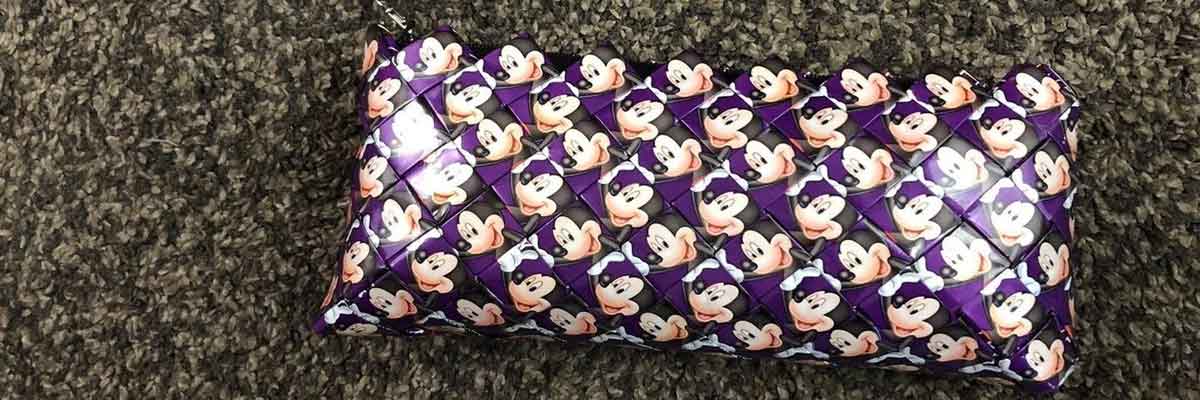Sustainable Fashion: Ecoist Interview
In the past, the term ‘sustainable fashion’ carried an almost instant stereotype of hemp and unappealing design. To even consider an alternative to fashion that went against the status quo was a gamble of reputation and money on consumer acceptance. As we’ve seen over the last couple years, however, the shades of green befalling industries has led to new markets and opportunities for companies willing to trail blaze. It’s not surprising then that the fashion industry — known for daring and bold ideas — would be one of the first to turn everything upside down. We’ve seen organic and animal free styles by Stella McCartney, activism from models like Summer Rayne Oakes, and corporate shifts to free trade and sustainable materials from companies like Timberland .
Amidst these changes in practice have also come new companies offering radical takes on classical products. Not just necessarily from a design point of view, but also on what makes up the product. One such company making waves throughout the industry is Ecoist . From their website,
“Ecoist offers eco-fashion accessories and eco-friendly gifts to conscious consumers who want to live according to modern aesthetics (aka “Ecoists”). Our products are made mostly from recycled, organic, and non-toxic materials, and are manufactured through our network of fair trade partnerships around the world.”
I recently had the opportunity to interview the Vice President of Ecoist, Jonathan Marcoschamer, and ask how they came to be, what their mission is, and if Paris Hilton really represents the company…
Groovy: How did the idea come about to combine fashion and the environment? Specifically through recycled materials?
The idea came about when we were inspired by some handbags we saw in Mexico and the group that was making them. The production of handbags made from recycled food packages has been a craft in Mexico from several years. Mexican artisans, skilled in the ancient technique of weaving, have collected these materials to make handbags, piñatas, baskets, and other decorations. This project was initiated by a non-profit organization, called Grupedsac, whose primary goal is to educate people from rural villages and different parts of Mexico about sustainability and to capacitate them with the skills necessary to earn a living in a sustainable way. One of the many projects this organization has initiated is a project aimed at training people to use discarded (misprints, defects, etc) food packages to produce all sorts of products which are sold to tourists and stores in Mexico.
When we met the founders of Grupedsac a little over 3 years ago, we were immediately inspired by their mission and realized the huge potential of this partnership. Together, we introduced the candy wrapper “fabric” to the market, a new fabric that was workable, shiny, durable, came in thousands of different colors, and best of all, it was practically free. Since then, we have been working with our partners in Mexico (and now also in Peru) to develop new designs with a more modern look-and-feel to them. Due to the success and exposure we’ve attained through the last 3 years, we have been able to secure partnerships with major brands like Luna Bar and are now working with others. Together with Grupedsac, we are planning to replicate this model in other countries where production centers, in close proximity to packaging companies, can be established to recycle discarded food packages and provide employment opportunities for locals.
With respects to combining fashion and the environment, fashion is very powerful and it can influence how people think and act. With just a little bit of research, we also found a growing number of eco-fashion brands sprouting all over the world and identified an opportunity in the market for developing a company that was dedicated to providing fair trade and eco-friendly products to the growing number of “green” consumers.
Groovy: Where do you find the materials for your products? Do enter into agreements with companies, like Luna?
Over the past two years, we have been working with Mexican candy and food companies in getting access to their misprints. As a result of our exposure in the market, we have ben approached by multiple U.S. brands interested in having us recycle their paper. One of the companies was Luna, whom we launched a co-branded limited collection of handbags and accessories made from Luna Bar wrappers. We are now very close to finalizing a deal with a major international brand.
Groovy: How is Ecoist sustainable beyond its products? Do you offset any of your energy consumption or support green charities?
We plant a tree for every bag that we sell with the aim of reaping the benefits that trees contribute to reducing global warming. We also do this to send a message to our customers and everyone that encounters Ecoist products. We work with Trees for the Future to plant trees in different projects around the world. We are also members of Coop America and make dozens of product donations to auctions that raise money for Green charities.
Our aim to is continually make changes that make us more sustainable in all aspects of our business, from the office supplies that we purchase to our internet service provider, we are discovering new suppliers and methods that can help us achieve that.
Groovy: Was it hard gaining acceptance for such a concept in the fashion industry? Was there a specific break or celebrity that helped usher in demand and awareness for the product?
Yes, specifically in the fashion industry, the candy wrapper concept is looked at as something of a novelty item, not as a new fabric, as we would like. I believe as we evolve season after season by showing new handbags that are in synch with trendy shapes and colors, the industry will being to accept this. In the Gift Industry where we focus more of our selling efforts, it has been accepted very well.
With respect to celebs, Lindsay Lohan was the first major celeb to own one of our handbags. It was given to her by a PR agency that was organizing NY fashion week last year. Also, we spotted a photograph of Petra Nemcova with one of our bags at a Vanity Fair event. We leveraged these moments to gain exposure.
I think demand and awareness for our products was driven by a combination of the product’s own characteristics, our company’s concept, and our presence in trade shows throughout the last two years.
Groovy: Any idea how that Paris Hilton and Ecoist partnership rumor got started? Has it resulted in more publicity for the company?
We sent out a press release almost a year ago where we announced that we had been selected to provide special VIP gift basket to Lindsay Lohan, Nicole Richie, and Paris Hilton at the American Music Awards.
We were notified by the agency (that was putting together the VIP gifts) that they were accepted by the celebs and their agents and they were thrilled. That was it. As you know, gossip column writers have their way of interpreting stories and making them sound “more interesting” for their readers. Yes, it resulted in publicity for Ecoist, but not very good publicity. We received quite a few e-mails from angry customers. At this point, I don’t think we would agree to have Paris Hilton as a spokesperson even if she offered to do it for free. As any other company, we are very careful in maintaining our integrity and positive image with our customers.
Groovy: Are you planning on shipping any free purses to celebrities this Christmas?
Nope. We have done so all year long ( Tipper Gore, Laurie David, Cameron Diaz, etc.)
Groovy: How long do the materials that make up the purses last? Are they up to the wear and tear requirements of an individual on the go?
The bags are woven and sown together so they hold up very well. We also insert recycled newspaper between the wrappers to give them extra sturdiness. People are really surprised by the quality when they see them in person. Our staff and close friends have had our bags for several years now and they practically look new.
Groovy: Companies might obviously look at your products as a fantastic way to advertise their own products. Are you careful about what labels make up your designs or is it simply a matter of ‘ We’re Recycling’ and the label represented is an afterthought?
We have aligned ourselves with like-minded green companies such as Luna Bar and Green Mountain Coffee, but we are also in discussion with a major U.S. brand. Indeed, our main objective is to keep as much waste-bound material away from landfills as possible while at the same time ensuring that the products we spend time creating will sell. Our objective with co-branding partnerships goes beyond just receiving the discarded wrappers from companies and making handbags, we’re actually getting very interested in our partners’ green initiatives and helping them promote this to green consumers. We always evaluate the element of “greenwashing” in current and potential partnerships, but we have to work under the assumption that any truly sincere step toward sustainability is positive.
Groovy: Any plans for umbrellas or luggage?
Good idea. We are experimenting with the flexibility of the candy wrapper “fabric” to see if it extends to uses such as Luggage and umbrellas. The wrappers and the way they are weaved are quite durable yet I am not sure whether they would be able to handle the travel “abuse” experienced by conventional luggage.
Groovy: Tell us a little bit about your partnership with ‘Trees For The Future’.
We work with Trees for the Future (TFTF) to plant trees in areas that have been affected by industrial development, natural disasters, fires, and other causes. Through donations, TFTF is able to send experienced personnel to different areas of the world to lead tree-planting and agricultural projects.







